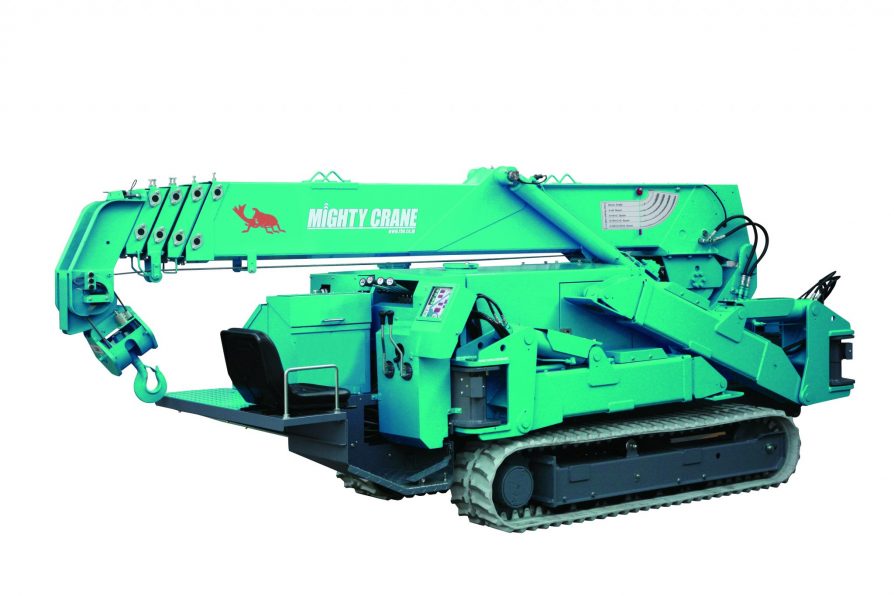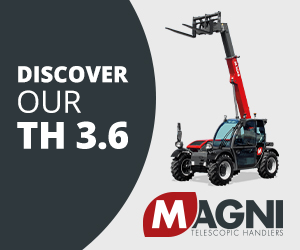)
New 3.3-Ton Mighty Crane Coming to U.S.
R&B Engineering Co., Ltd., Tokyo, Japan, will soon introduce its second crawler-mounted mini-crane into the U.S. market.
The soon-to-arrive model, named the Mighty Crane CR335D, lifts up to 6,570 lbs. at an 8’2” radius and can work in narrow or restricted areas, indoors or out, where larger cranes cannot.
The CR335D follows in the still-fresh tracks of R&B’s first U.S. offering, the slightly smaller CR285D, which arrived last summer and can lift a maximum of 6,100 lbs.
R&B’s U.S. agent, Steven Spence, president of Kumu International Sales, Boise, Idaho, says that R&B will complete the government-required testing of the CR335D and be ready to deliver units in the next couple of months. “We’re so close, we can take orders today,” he says.
According to Spence, both R&B mini-cranes have been field proven in Japan for years, but will now be a new option for crane users in the United States.
In travel mode, the CR335D crane measures just 13’7” long, 4’3” wide, and 5’8” tall. It weighs just 8,289 lbs. with the standard 20.4-hp Yanmar diesel engine, or 8,774 lbs. with the optional 200V-300V 3-phase electric motor. Ground pressure for travel is just 5.33 psi, and the machine can climb a 23° grade. Top speed is 1.0 mph.
Set up for lifting, its four radial, telescoping outriggers provide a maximum lifting base of up to 14’10” x 16’1”. The hydraulically telescoping 5-section boom extends from 12’2” to its 40’11” maximum length in 33 seconds.
Maximum lifting height is 41’2”, and maximum lifting radius is 39’11”. At the longest radius, the CR335D can pick 573 lbs.
The boom can be raised from 0° to its 80° maximum angle in just 18 seconds, and the 360° continuous swing system can rotate the boom at up to 2 rpm.
The boom and block can be reeved with up to four parts of line, and hoisting speed is 35’5” per minute with four-part reeving. The load block for four-part line comes standard; blocks for 1- and 2-part reeving are optional.
The Mighty Crane CR335D’s operator can run the crane from the operator’s seat at the onboard control station or from an optional cable-attached remote control.
Optional equipment includes a moment limiter, head lamps, and the electric motor for exhaust-free operation.











